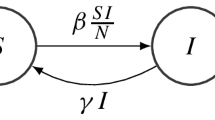Abstract
Nowadays, the interest in analyze and study the behavior of uncontrollable nature phenomena related to the impact of marketing campaigns is an action of prime importance to prevent chaotic dynamics. In this paper we assess the influence of Dynamical Systems theory and Mathematical Epidemiology on a real viral marketing campaign: Dove Real Beauty Sketches, based on a SIR epidemiological model. Motivated by the overwhelming success of this campaign, we study the mathematical properties and dynamics of the campaign real data - from the parameters estimation and its sensitivity to the stability of the mathematical model, simulated in Matlab. Mathematically, we show not only that the campaign was a viral epidemic, but also that it can be leveraged and optimized by epidemiological and mathematical modeling, which offer important guidelines to maximize the impact of a viral message and minimize the uncertainty related to the conception and outcome of new marketing campaigns.
Access this chapter
Tax calculation will be finalised at checkout
Purchases are for personal use only
Similar content being viewed by others
References
Long, C., Wong, R.C.W.: Viral marketing for dedicated customers. Inf. Syst. 46, 1–23 (2014)
Mochalova, A., Nanopoulos, A.: A targeted approach to viral marketing. Electron. Commer. Res. Appl. 13(4), 283–294 (2014)
Woerndl, M., Papagiannidis, S., Bourlakis, M., Li, F.: Internet-induced marketing techniques: critical factors in viral marketing campaigns. Int. J. Bus. Sci. Appl. Manage. 3(1), 33–45 (2008)
Haryani, S., Motwani, B.: Discriminant model for online viral marketing influencing consumers behavioural intention. Pac. Sci. Rev. B: Humanit. Soc. Sci. 1(1), 49–56 (2015)
Rodrigues, H.S., Fonseca, M.J.: Can information be spread as a virus? Viral marketing as epidemiological model. Math. Methods Appl. Sci. 39(16), 4780–4786 (2016)
Gardner, J., Sohn, K., Seo, J., Weaver, J.: A sensitivity analysis of an epidemiological model of viral marketing: when viral marketing efforts fall flat. J. Mark. Dev. Competit. 7(4), 25–46 (2013)
Breen, C.: “Real Beauty” Campaigns in the Media: Dove Campaign for Real Beauty. http://www.writing.ucsb.edu/sites/secure.lsit.ucsb.edu.writ.d7/files/sitefiles/news/2015%20Breen.pdf. Accessed 28 Sept 2016
Stampler, L.: How Dove’s ‘Real Beauty Sketches’ Became The Most Viral Video Ad Of All Time. http://static4.businessinsider.com/image/519cd1336bb3f76344000015-960/screen%20shot%202013-05-22%20at%209.48.32%20am.png. Accessed 28 Sept 2016
Leskovec, J., Adamic, L.A., Huberman, B.A.: The dynamics of viral marketing. ACM Trans. Web (TWEB) 1(1), 1–39 (2007)
Schroeder, S.: YouTube Now Has One Billion Monthly Users. http://mashable.com/2013/03/21/youtube-one-billion/#Wv1EUzqZGkqx. Accessed 28 Sept 2016
Britton, T.: Stochastic epidemic models: A survey. Math. Biosci. 225(1), 24–35 (2010)
Lloyd, A.: Sensitivity Analysis and Least Squares Parameter Estimation for an Epidemic Model. http://www4.ncsu.edu/~allloyd/RTG/RTG_Workshop_Parameter_Estimation.pdf. Accessed 28 Sept 2016
Capaldi, A., Behrend, S., Berman, B., Smith, J., Wright, J., Lloyd, A.: Parameter estimation and uncertainty quantification for an epidemic model. Math. Biosci. Eng. 9(3), 553–576 (2012)
Acknowledgments
This work was supported in part by the Portuguese Foundation for Science and Technology (FCT - Fundação para a Ciência e a Tecnologia), through CIDMA - Center for Research and Development in Mathematics and Applications, within project UID/MAT/04106/2013; and through Algoritmi R&D Center, under COMPETE: POCI-01-0145-FEDER-007043 within the Project Scope: UID/CEC/00319/2013.
Author information
Authors and Affiliations
Corresponding author
Editor information
Editors and Affiliations
Rights and permissions
Copyright information
© 2017 Springer International Publishing AG
About this paper
Cite this paper
Gonçalves, J.N.C., Rodrigues, H.S., Monteiro, M.T.T. (2017). A Contribution of Dynamical Systems Theory and Epidemiological Modeling to a Viral Marketing Campaign. In: Madureira, A., Abraham, A., Gamboa, D., Novais, P. (eds) Intelligent Systems Design and Applications. ISDA 2016. Advances in Intelligent Systems and Computing, vol 557. Springer, Cham. https://doi.org/10.1007/978-3-319-53480-0_96
Download citation
DOI: https://doi.org/10.1007/978-3-319-53480-0_96
Published:
Publisher Name: Springer, Cham
Print ISBN: 978-3-319-53479-4
Online ISBN: 978-3-319-53480-0
eBook Packages: EngineeringEngineering (R0)




